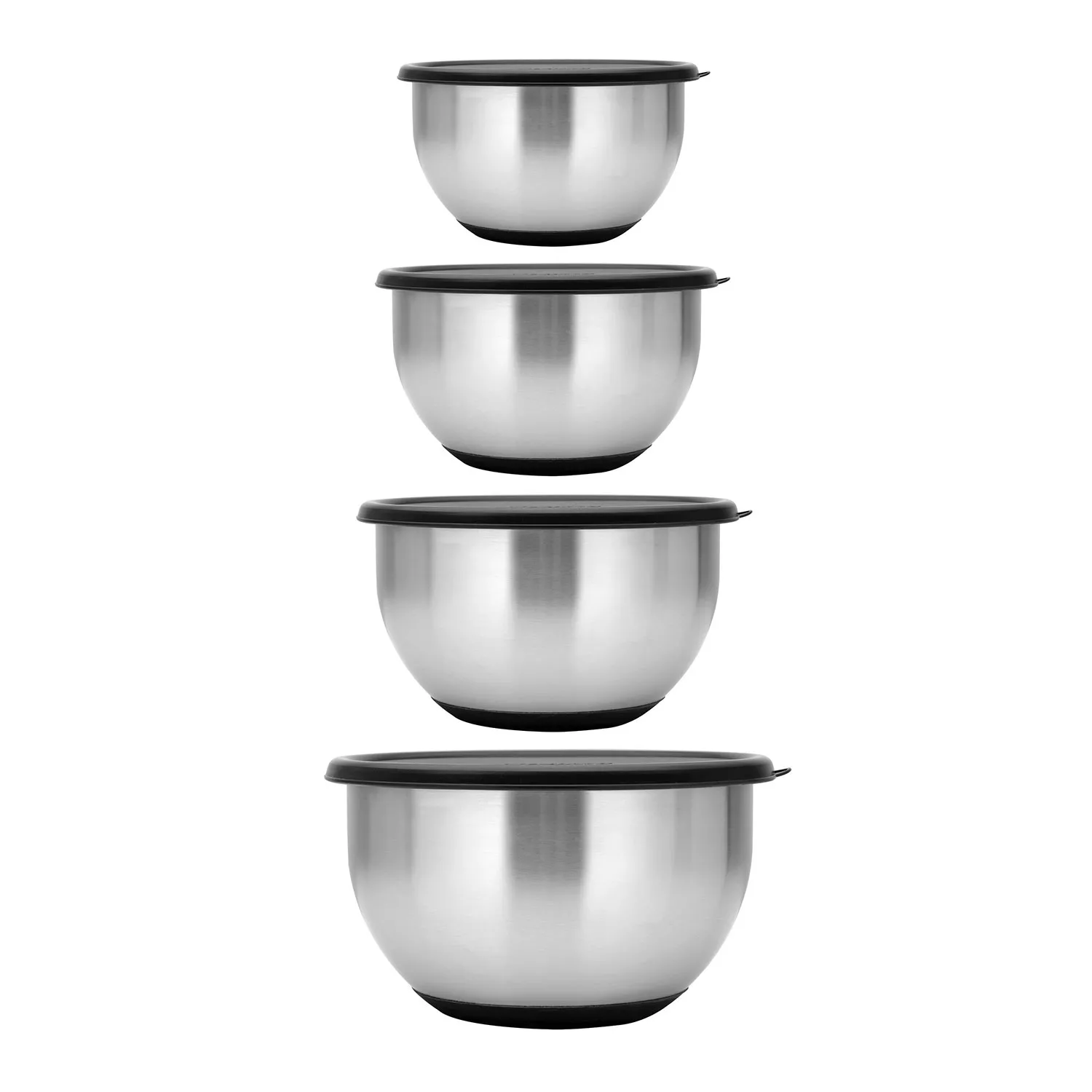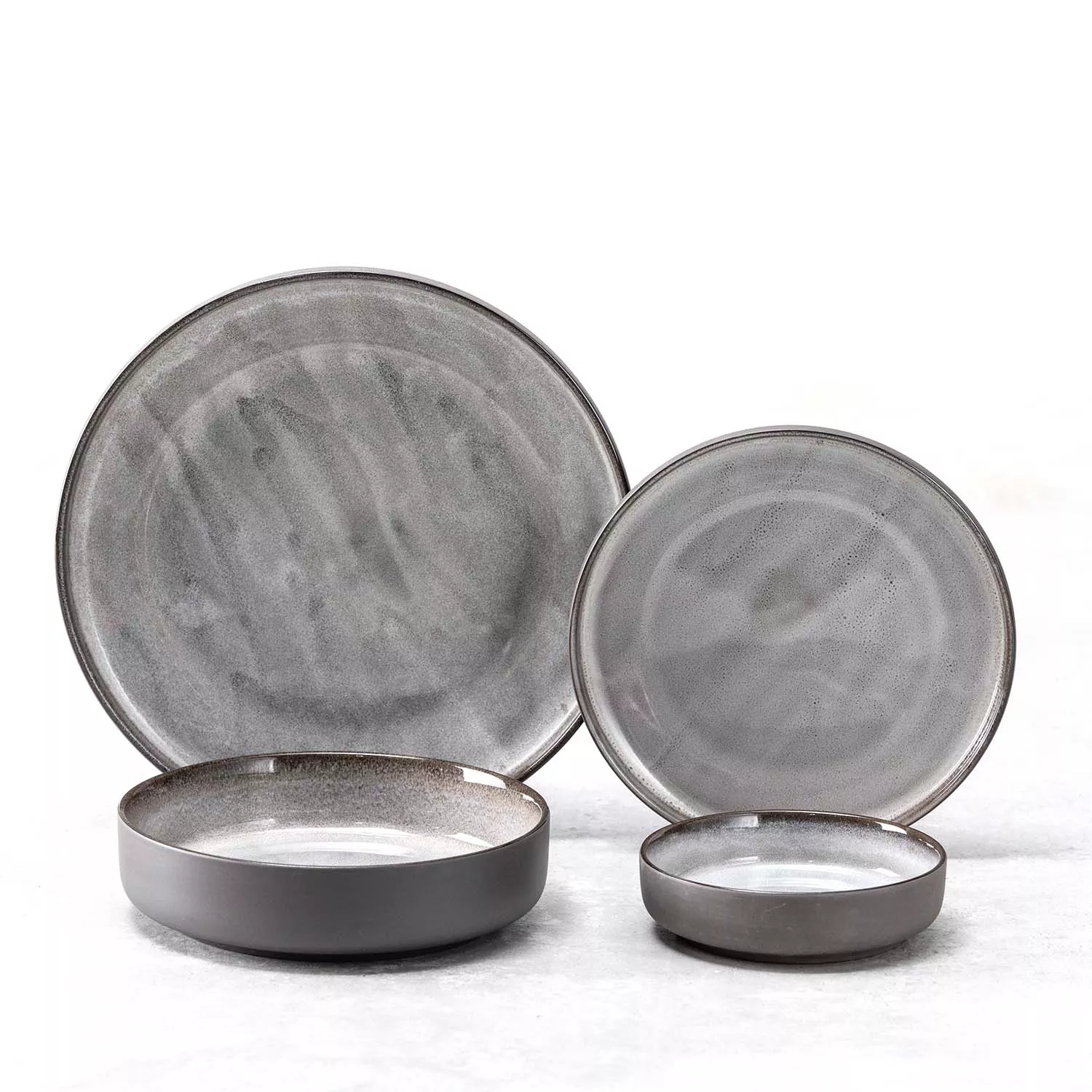Gluten-Free Prosciutto-Wrapped Baked Brie Rolls

Savoring Health: The Nutritional Powerhouse of Gluten-Free Prosciutto-Wrapped Baked Brie Rolls
Indulge in the guilt-free pleasure of our Gluten-Free Prosciutto-Wrapped Baked Brie Rolls, a dish that not only tantalizes your taste buds but also aligns perfectly with a health-conscious lifestyle. In this comprehensive guide, we'll unfold the myriad health benefits of each ingredient, backing it with top nutritionist insights. Whether you're following the Whole Health Flexi-Plan diet or just seeking nutritious indulgence, these bites are your go-to gourmet treat.
Ingredient Breakdown and Health Benefits
1. Gluten-Free Puff Pastry: A Digestive Delight
Health Benefits
The gluten-free puff pastry is not just a substitute for its wheat-based counterpart; it's a culinary innovation that brings numerous health benefits, especially for individuals with gluten sensitivities or celiac disease. Here's a detailed look at its advantages:
1.1. Safe for Gluten-Related Disorders
- Key Advantage: The absence of gluten in this pastry makes it a safe option for those with celiac disease, non-celiac gluten sensitivity, and wheat allergies. Gluten, a protein found in wheat, barley, and rye, can trigger harmful immune responses in susceptible individuals. Using gluten-free puff pastry eliminates this risk.
1.2. Promotes Digestive Wellness
- Digestive Health: For many, gluten can be difficult to digest, leading to symptoms like bloating, gas, and discomfort. The gluten-free puff pastry is formulated to be gentler on the stomach, promoting overall digestive health and comfort.
1.3. Reduces Inflammatory Responses
- Inflammation Reduction: In those with gluten intolerance, gluten consumption can cause an inflammatory response. This can lead to various health issues, ranging from intestinal damage to systemic inflammation. By avoiding gluten, the gluten-free puff pastry helps in reducing such inflammatory responses.
1.4. Nutrient Absorption
- Improved Nutrient Uptake: For individuals with celiac disease, gluten can impair the absorption of essential nutrients by damaging the lining of the small intestine. Gluten-free options can aid in better nutrient absorption and overall gut health.
1.5. Versatility in Diet
- Dietary Inclusion: Gluten-free puff pastry expands the culinary repertoire for those on a gluten-free diet, allowing them to enjoy a wider range of dishes without the worry of gluten contamination.
1.6. Potential for Lower Glycemic Index
- Blood Sugar Management: Depending on the ingredients used, some gluten-free puff pastries can have a lower glycemic index than traditional wheat-based pastries, which can be beneficial for blood sugar management.
1.7. Broadening Culinary Horizons
- Enhanced Culinary Experience: The development of gluten-free puff pastry has been a game-changer in the culinary world, allowing chefs and home cooks alike to create flaky, delicious pastries that are both inclusive and health-conscious.
The gluten-free puff pastry is more than just an alternative for those avoiding gluten; it's a testament to the evolving world of culinary arts where health and flavor coexist. Its gentle nature on the digestive system, coupled with the benefit of reducing inflammation and improving nutrient absorption, makes it a wise choice for anyone seeking a healthier, more inclusive diet.
2. Brie Cheese: A Calcium-Rich Indulgence
Health Benefits
Brie cheese, renowned for its creamy texture and rich flavor, is more than just a culinary treat. It is a nutritionally dense food that offers a range of health benefits, particularly due to its high calcium content and valuable nutrients.
2.1. High Calcium Content for Bone Health
- Bone Density and Strength: Brie is an excellent source of calcium, a vital mineral for maintaining bone density and strength. Regular consumption of calcium-rich foods like Brie can help prevent osteoporosis and other bone-related diseases, especially important as one ages.
2.2. Protein for Muscle Maintenance
- Muscle Health: Brie provides a good amount of high-quality protein, essential for muscle repair and growth. Proteins are crucial for the body's maintenance and development, making Brie a beneficial addition to a balanced diet.
2.3. Rich in Vitamin B12
- Nervous System and Energy: Vitamin B12, found abundantly in Brie, plays a significant role in nerve function and the production of DNA and red blood cells. It's also crucial for maintaining energy levels, as it aids in converting the food we eat into glucose, the body's main energy source.
2.4. Source of Healthy Fats
- Heart Health and Hormone Production: While cheese is often high in fat, Brie contains a balance of healthy fats, including monounsaturated and polyunsaturated fats. These fats are essential for heart health, hormone production, and overall cell function.
2.5. Probiotic Properties
- Gut Health: Brie, like many fermented dairy products, contains probiotics. These beneficial bacteria can improve gut health, aid in digestion, and even boost the immune system.
2.6. Contributes to a Feeling of Fullness
- Weight Management: The protein and fat in Brie contribute to a feeling of satiety or fullness, which can be helpful in weight management. Including Brie in a meal may help reduce overall calorie intake by lessening the likelihood of overeating.
2.7. Rich in Other Vitamins and Minerals
- Overall Well-being: Brie is also a source of other essential nutrients like phosphorus, riboflavin (Vitamin B2), and vitamin A, which contribute to overall health. Phosphorus works with calcium to build bones, riboflavin helps convert food into energy, and vitamin A is vital for skin and eye health.
Brie cheese is more than a luxurious addition to a cheese platter; it's a nutrient-packed food that supports bone health, muscle maintenance, and overall well-being. Its balance of calcium, proteins, vitamins, and healthy fats makes it an excellent choice for those seeking both flavor and nutritional value in their diet.
3. Prosciutto: Lean Protein Source
Health Benefits
Prosciutto, a delicately cured Italian ham, is not just celebrated for its unique flavor and texture but also for its nutritional benefits. Primarily known as a source of lean protein, prosciutto contributes significantly to a balanced diet.
3.1. Lean Protein for Muscle Health
- Muscle Building and Repair: Prosciutto is a rich source of high-quality lean protein, crucial for muscle building, repair, and maintenance. Proteins are the building blocks of muscle tissue, and including lean sources like prosciutto in your diet can help in maintaining muscle mass, particularly important for athletes and in aging populations.
3.2. Rich in B Vitamins
- Energy Production and Metabolism: Prosciutto contains B vitamins, notably B1 (thiamine) and B12, which play a vital role in energy production. Thiamine helps in converting carbohydrates into energy, while Vitamin B12 is essential for the metabolism of proteins and fats.
3.3. Low in Fat
- Weight Management: While being rich in protein, prosciutto is relatively low in fat, especially when compared to other meats. This makes it a suitable option for those who are conscious about their fat intake and are looking for leaner meat options.
3.4. Source of Minerals
- Mineral Content: Prosciutto provides essential minerals like iron, zinc, and selenium. Iron is crucial for forming hemoglobin, which carries oxygen in the blood. Zinc supports the immune system, and selenium acts as an antioxidant, protecting the body from damage caused by free radicals.
3.5. Supports Heart Health
- Cardiovascular Benefits: Despite being a cured meat, prosciutto contains unsaturated fats, which are beneficial for heart health. These fats can help in reducing the levels of LDL (bad) cholesterol, thereby lowering the risk of heart disease.
3.6. Enhances Mental Functioning
- Cognitive Benefits: The presence of B vitamins, particularly B12, in prosciutto also contributes to better brain health. Vitamin B12 is known for its role in maintaining healthy nerve cells and is essential for cognitive functioning.
3.7. Ideal for Low-Carb Diets
- Keto-Friendly: Prosciutto fits well into low-carbohydrate diets, like the ketogenic diet, as it is high in protein and fats but low in carbs. This makes it an excellent choice for those following such dietary plans.
3.8. Beneficial for Anemia Prevention
- Iron Content: The iron content in prosciutto is especially beneficial for individuals at risk of anemia. Regular consumption of iron-rich foods like prosciutto can help in maintaining healthy iron levels.
Prosciutto is a valuable addition to a balanced diet, offering high-quality lean protein, essential B vitamins, and important minerals. Its benefits extend from muscle health and energy metabolism to heart health and cognitive function, making it a versatile and nutritious choice for various dietary needs.
4. Organic Fig Preserves: Natural Sweetness with a Nutritional Punch
Health Benefits
Organic fig preserves, derived from the naturally sweet and nutritious fruit, figs, offer a range of health benefits. These preserves retain most of the nutritional value of fresh figs, making them not only a delightful addition to various dishes but also a healthful choice.
4.1. High in Dietary Fiber
- Digestive Health: One of the most significant benefits of fig preserves is their high dietary fiber content. Fiber aids in digestion by adding bulk to the stool and promoting regular bowel movements, which is essential for maintaining a healthy digestive system. This can help prevent constipation and other digestive disorders.
4.2. Rich Source of Essential Minerals
- Potassium for Heart Health: Figs are an excellent source of potassium, a mineral that helps regulate blood pressure by counteracting the effects of sodium. This makes fig preserves beneficial for heart health.
- Calcium for Bone Strength: They also provide a good amount of calcium, which is vital for maintaining strong bones and teeth. Regular consumption can contribute to preventing bone-related disorders like osteoporosis.
- Magnesium for Various Body Functions: Magnesium, another mineral present in figs, plays a crucial role in over 300 enzymatic reactions in the body, including energy production, DNA synthesis, and muscle and nerve function.
4.3. Antioxidant Properties
- Reducing Oxidative Stress: Figs contain antioxidants like vitamin A, vitamin K, and polyphenols. These compounds combat oxidative stress in the body, reducing the risk of chronic diseases such as heart disease and cancer.
4.4. Natural Sweetener with Lower Glycemic Index
- Blood Sugar Management: Organic fig preserves can be a healthier alternative to refined sugars. Figs have a lower glycemic index, meaning they cause a slower rise in blood sugar levels, making them a safer option for diabetics in moderation.
4.5. Boosts Immune System
- Immune Support: The nutrients in figs, particularly B vitamins and minerals like zinc and manganese, play a role in strengthening the immune system, helping the body fend off infections.
4.6. Promotes Skin Health
- Skin Benefits: The antioxidant properties of figs can also benefit the skin. Antioxidants help in fighting against free radical damage, potentially reducing signs of aging and promoting a healthy skin glow.
4.7. May Aid in Weight Management
- Satiety and Weight Control: The fiber content in figs can also aid in weight management. Fiber helps in creating a feeling of fullness, which can reduce overall calorie intake by mitigating overeating.
4.8. Provides Essential Vitamins
- Vitamin Content: Figs are a source of several vitamins, including vitamin A (important for eye health), several B vitamins (crucial for energy metabolism), and vitamin K (needed for blood clotting and bone metabolism).
Organic fig preserves are much more than a sweet addition to your diet. Their rich composition of dietary fiber, essential minerals, antioxidants, and vitamins makes them a powerhouse of nutrition, offering benefits ranging from digestive health and heart health to immune support and skin care. Incorporating fig preserves into your diet can contribute to overall health and well-being, making them a valuable and tasty ingredient in health-conscious cooking.
5. Fresh Herbs and Spices: The Antioxidant Warriors
Health Benefits
Fresh herbs and spices are not just culinary delights that enhance the flavor of food; they are also nutritional powerhouses packed with antioxidants and various health-promoting compounds. Let's delve into the details of how these ingredients, such as thyme, contribute to overall health:
5.1. Potent Antioxidants
- Combatting Free Radicals: Herbs and spices are rich in antioxidants, which play a crucial role in neutralizing free radicals in the body. Free radicals are unstable molecules that can cause oxidative stress, leading to cell damage and contributing to chronic diseases, including cancer and heart disease. The antioxidants in herbs help mitigate these risks.
5.2. Anti-Inflammatory Properties
- Reducing Inflammation: Many herbs and spices have anti-inflammatory properties. Chronic inflammation is a root cause of numerous health issues, including arthritis, asthma, and certain heart conditions. By incorporating these ingredients into your diet, you may reduce inflammation and its associated risks.
5.3. Thyme: A Specific Case Study
- Unique Compounds in Thyme: Thyme, for instance, contains thymol and carvacrol, two compounds known for their antibacterial and antifungal properties. These compounds not only help in preserving food but also offer health benefits such as respiratory relief and improved digestion.
5.4. Boosting Immune System
- Immune Support: Herbs like thyme are also known for their immune-boosting properties. They are rich in vitamins, such as vitamin C, which is essential for the proper function of the immune system.
5.5. Heart Health
- Cardiovascular Benefits: Certain spices and herbs, including thyme, have been shown to have heart-healthy benefits. They can help lower blood pressure and cholesterol levels, which are significant factors in heart disease.
5.6. Digestive Health
- Aiding Digestion: Many herbs and spices stimulate digestion by increasing saliva and stomach acid production, helping to break down and digest food more efficiently. This can alleviate digestive discomfort and improve nutrient absorption.
5.7. Cognitive Function
- Enhancing Brain Health: Research suggests that the antioxidants in herbs and spices may also benefit brain health. They can help in reducing cognitive decline related to aging and may lower the risk of neurodegenerative diseases like Alzheimer's.
5.8. Cancer Prevention
- Reducing Cancer Risk: The compounds found in many herbs and spices have been studied for their potential to reduce cancer risk. Their antioxidant and anti-inflammatory properties may help in preventing the initiation and progression of various types of cancer.
5.9. Skin Health
- Skin Benefits: Herbs and spices can also have a positive impact on skin health due to their anti-inflammatory and antibacterial properties. They can help in treating skin conditions like acne and may improve skin appearance.
Incorporating a variety of fresh herbs and spices into your diet can have substantial health benefits. They are not only flavor enhancers but also provide a significant boost in terms of antioxidants, anti-inflammatory properties, immune support, and more. By regularly consuming these "antioxidant warriors," you can potentially improve your overall health and well-being, making them a valuable addition to any health-conscious diet.
Nutritional Overview
- Caloric Composition: Balanced for energy sustenance.
- Micronutrient Richness: High in vitamins and minerals.
- Protein Profile: Excellent source of high-quality proteins.
- Dietary Fiber: Aids in digestive health.
Tailored for Dietary Plans
- Suitable for Gluten-Free Diets: Ideal for those avoiding gluten.
- Compatible with Low-Carb Plans: Fits into low-carb dietary regimens.
- Flexi-Plan Friendly: Adaptable for flexible diet plans.
A Dish for Every Diet
Our Gluten-Free Prosciutto-Wrapped Baked Brie Rolls not only cater to the gourmet palate but also fit seamlessly into various diet plans, including gluten-free, low-carb, and the Whole Health Flexi-Plan diet. Its ingredients are a symphony of health benefits, making it more than just a delicious snack. It's a testament to how gourmet can meet healthy, proving that indulgence and well-being can coexist beautifully in your diet.
Kitchen Tools We Love:
Indulge in the perfect blend of savory and sweet with our Gluten-Free Prosciutto-Wrapped Baked Brie Rolls. Crafted with care to fit into the Whole Health Flexi-Plan, each roll is a delightful mix of creamy brie and delicate prosciutto, enveloped in flaky, gluten-free pastry. Accented with organic fig preserves and a hint of black pepper, these rolls are baked to golden perfection. Garnished with honey, thyme, and pomegranate, they're a luxurious treat that aligns with your health-conscious lifestyle.
- 1 wheel (8-12 ounce) of gluten-free Brie cheese (cut into 8 slices)
- 8 slices of thin prosciutto
- 2 sheets of gluten-free puff pastry (thawed)
- 8 tsp organic fig preserves
- Freshly ground black pepper
- 1 egg (beaten (for egg wash))
- Coarse sugar (optional, for sprinkling)
- Honey, fresh thyme, and pomegranate arils, for garnish
Preheat your oven to 425° F (220° C) and line a baking sheet with parchment paper.
Wrap each slice of Brie with prosciutto.
Cut the puff pastry sheets into 4 squares each (8 squares total). Spread each square with fig preserves, then place a slice of prosciutto-wrapped Brie in the center. Season with black pepper. Fold the pastry over the Brie, pinching to seal.
Place the pastry-wrapped Brie on the baking sheet. Brush with egg wash and sprinkle with coarse sugar if desired.
Bake for 20-25 minutes, or until the pastry is golden brown and puffed.
Garnish with a drizzle of honey, fresh thyme, and pomegranate arils before serving.
Servings 8
- Amount Per Serving
- Calories 350kcal
- % Daily Value *
- Total Fat 22g34%
- Saturated Fat 12.99g65%
- Cholesterol 70mg24%
- Sodium 450mg19%
- Potassium 150mg5%
- Total Carbohydrate 24g8%
- Dietary Fiber 1g4%
- Sugars 5g
- Protein 15g30%
- Calcium 100 mg
- Iron 1.5 mg
- Vitamin D 0.3 IU
* Percent Daily Values are based on a 2,000 calorie diet. Your daily value may be higher or lower depending on your calorie needs.


